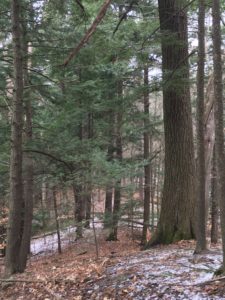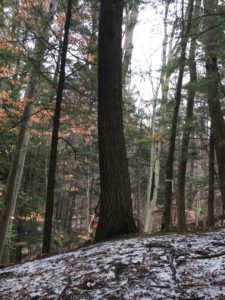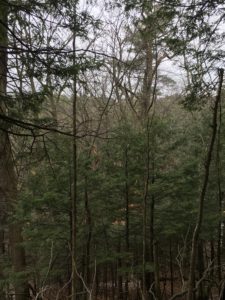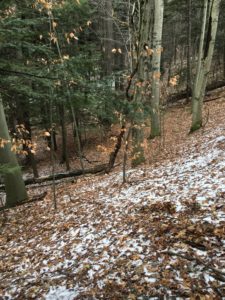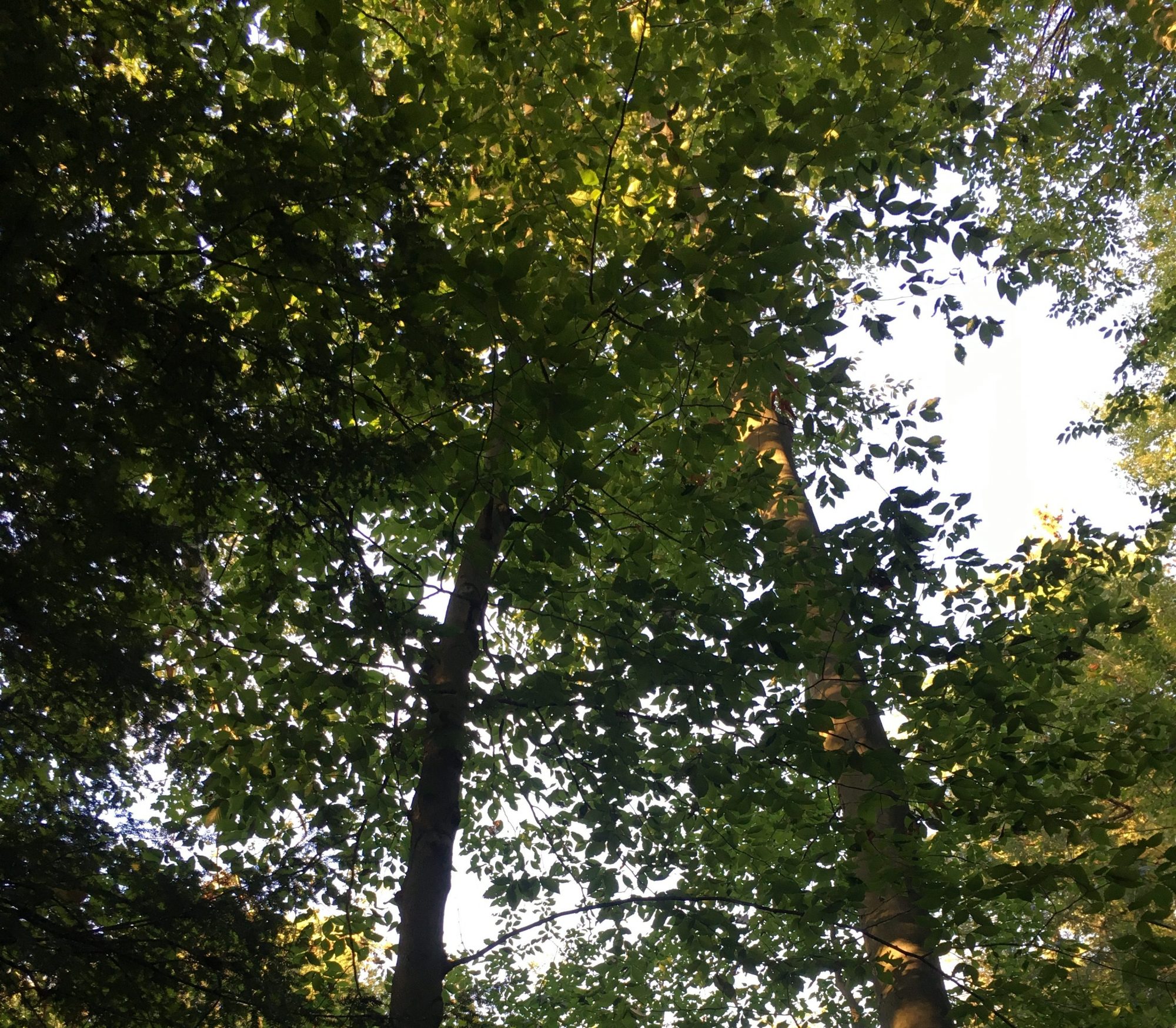Centennial Woods’ has a younger forest habitat. Since it was cleared back in the 1800’s for land use for farms, the oldest pines started growing back in about 1860. The species within the woods is still quite diverse, but it is not quite an old-growth forest yet. The soils of Centennial Woods is slightly acidic, due to the abundance of pines, and the soil type varies throughout. Centennial Woods is quite hilly, so down where streams run through, the soil is very moist. On the other hand, my phenology spot is up on top of a hill, and it has slightly better drained soils. This would explain why there are more Red Oaks and American Beeches in this section of the woods.
The last couple weeks has been an interesting mix of weather. Lots of rain, lots of sun, and a couple big and small snowstorms mixed in. The snow melt and rain has brought a lot of water running through the soils. During my visit, there was the slightest covering of snow on the forest floor. As I was walking to the forest, big flakes of snow were falling from the sky. Walking to my phenology spot there was a lot of mud and mush, but climbing up the hills of Centennial brought be to slightly drier and sturdier soils. Standing there, I could not see any forms of animal life. However, I did hear a lot of bird calls during my time in the woods. These bird calls were the first I’ve heard in the last few visits, meaning the birds are finally coming home.
Looking at BioFinder, I saw that Centennial Woods is partly a wetland site. It also is habitat for rare animal species and is classified as a rare upland natural community.
